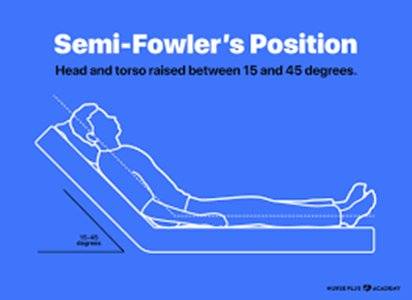When moving a client up in bed with the assistance of another caregiver, the nurse should:
elevate the head of the bed.
have the client fold the arms across the chest.
ask another nurse about the plan of care.
maintain a pillow under the client's head.
The Correct Answer is B
Choice A rationale: Elevating the head of the bed is not the recommended action when moving a client up in bed.
Choice B rationale: Having the client fold the arms across the chest is not the primary action when moving a client up in bed.
Choice C rationale: Asking another nurse about the plan of care is not necessary in this situation and does not directly address the action needed when moving the client.
Choice D rationale: Maintaining a pillow under the client's head helps provide comfort and support during the movement.
Nursing Test Bank
Naxlex Comprehensive Predictor Exams
Related Questions
Correct Answer is B
Explanation
Choice A rationale: Protective supine positioning is not ideal for managing dysphagia or facilitating swallowing.
Choice B rationale: Semi-Fowlers positioning, with the head of the bed elevated at a 30 to 45-degree angle, is often recommended for clients with dysphagia. This position helps prevent aspiration during eating and promotes effective swallowing.
Choice C rationale: Low-Fowlers and Fowlers positions may not be as effective in preventing aspiration during eating as the Semi-Fowlers position.
Choice D rationale: Fowlers positioning alone may not be sufficient for managing dysphagia; Semi-Fowlers is a more specific recommendation.

Correct Answer is ["94"]
Explanation
The total volume is divided by the total time
=750/8
=93.75 ml/hr
= 94 ml/hr (rounded off to the nearest whole number)
Whether you are a student looking to ace your exams or a practicing nurse seeking to enhance your expertise , our nursing education contents will empower you with the confidence and competence to make a difference in the lives of patients and become a respected leader in the healthcare field.
Visit Naxlex, invest in your future and unlock endless possibilities with our unparalleled nursing education contents today
Report Wrong Answer on the Current Question
Do you disagree with the answer? If yes, what is your expected answer? Explain.
Kindly be descriptive with the issue you are facing.
